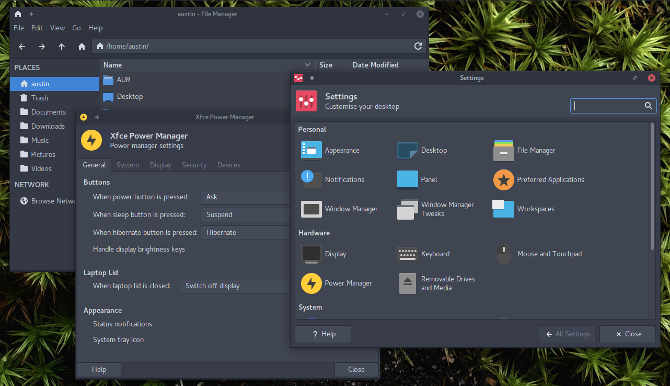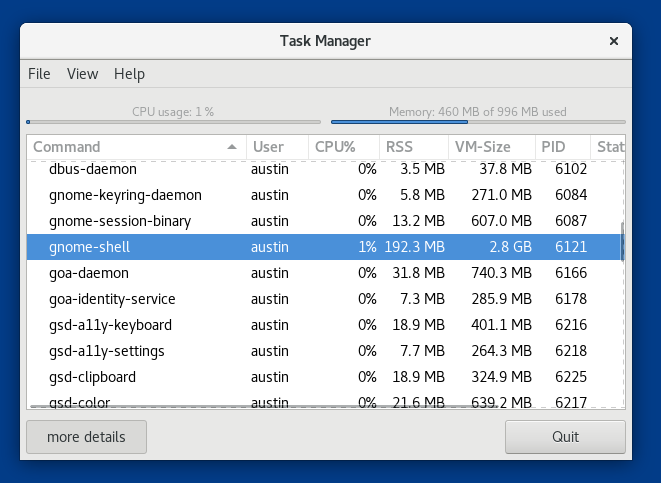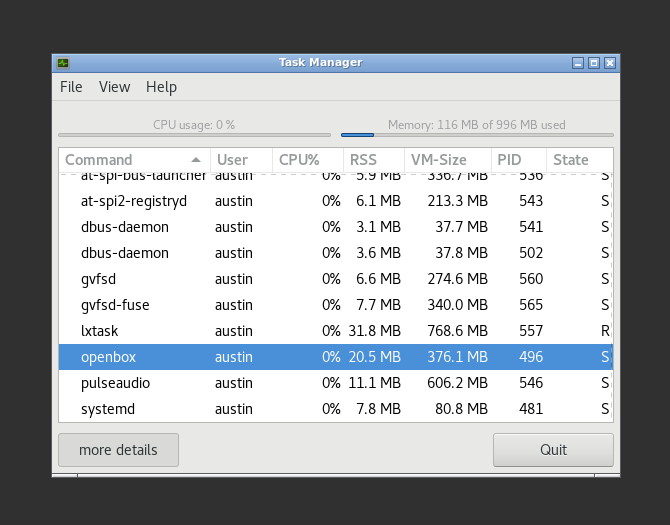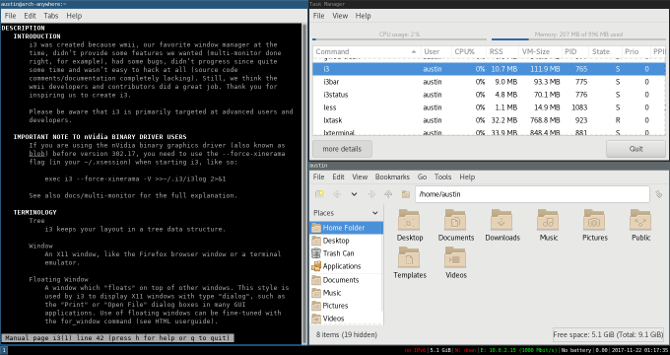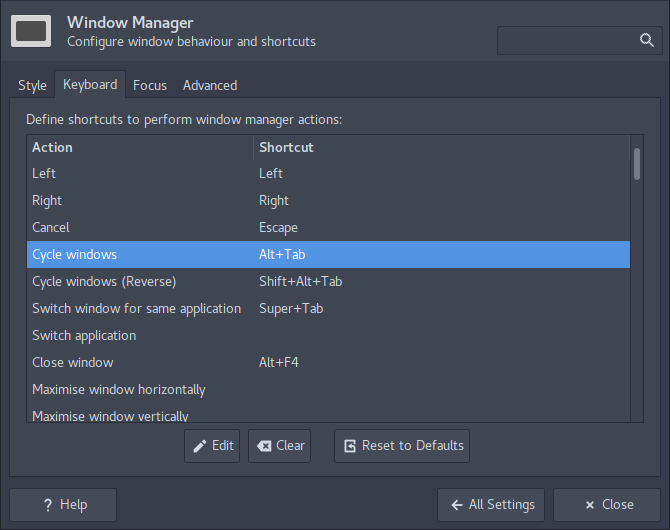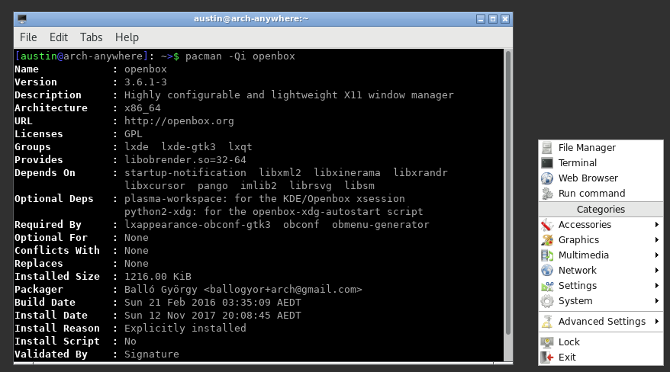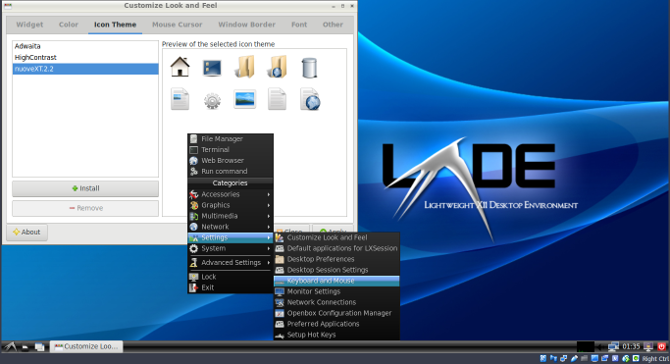The general look of some operating systems remain the same, regardless of what you do to them. Linux is different in that regard, with a very high level of flexibility at its core. Each computer running it can vary wildly in both looks, and behavior. As such, it's easy to have something on Linux that's suited just for you.
This can be hard to do though, if you're not sure what you're looking for. This applies even more if you're using something a bit unique. In this case, using a window manager as your desktop environment. If you're considering this route, there are a few things you should think about first.
What Is a Desktop Environment?
A desktop environment is a set of programs which lets you easily interact with your computer. This can include things like a file manager, among other things. Examples of desktop environments include KDE's Plasma desktop and GNOME. One major part is called the window manager (e.g. Plasma's KWin and GNOME's Mutter). Put shortly, it's software that's in charge of making the apps you run display in a certain way inside windows.
For example, the programs you run on your desktop can usually be moved around and resized. You can easily switch between different applications, and minimize or maximize them. The window manager gives you a way to do this: a frame around programs to click and drag, and so on.
This piece of software is usually combined with others, to make up a desktop environment. For example, you might have a program dock to control your applications, and so on. As such, calling a window manager one by itself is a bit of a misnomer. That said, you can still use them on their own -- some are even designed for that. And it's easy enough to add separate programs which do the same task as a full desktop environment.
What Is Your Computer Like?
It's possible you might end up using a window manager (and little else), simply because it runs the best on your system. Being a rather small (if important) part of a desktop environment, you're cutting out many other programs, not needed to actually run things. This can be a great help if your computer is old and doesn't have much resources to share.
All applications need memory to work properly -- it provides them with a way to run. Without it, they wouldn't work. So, say that you have a computer with only 4GB of RAM. Web browsers, especially, can easily take up more than half that amount (especially certain, heavier ones). Combine this with multiple programs, opened together, and things begin to get rather cramped.
Running something like the GNOME desktop can take up a large amount of system memory. A fresh session took up half a gigabyte, for example. It might not sound like a lot, but it can still be a problem to some users. And you might prefer to devote that memory to other programs you actually use to get things done. This is only a larger point of concern with systems with very constrained amounts of resources.
In contrast, many window managers by themselves are very light, and take up little space. Openbox, for example, takes a fraction of what larger desktop environments need to run. Very useful for systems that can't afford to use up too much memory.
Are Keyboards Better Than Mice?
Some window managers have a smaller focus on mice than others. For ones designed for standalone use, keyboard shortcuts can even be essential, forcing users to learn how to use them. This is more the case for the more unique window managers, which behave differently to more familiar ones.
For example, look at the i3 window manager. Unlike more common window managers found in most desktop environments, it focuses a lot on keyboard shortcuts to move and place its programs. This is, in part, due to its design. It's made so that open windows can't overlap with each other. Instead, they can split screen real estate between them, or go underneath them completely.
Because of this, it needs keyboard shortcuts to tell them where to go, something that the mouse alone can't really do. For example, there are commands to ask windows to be positioned horizontally or vertically from each other. This is meant to help make your workflow fast and efficient, but only if you're willing to learn how to use it.
This being said, most window managers, even one inside a desktop environment, can be set up to use shortcuts. But not all of them will be as dependent on the keyboard as others, or perhaps, as efficient.
How Much Do You Want to Tweak?
Some desktop environments are known to be more flexible than others. The Plasma desktop for example, has a reputation for being very easy to change and tweak. As changeable as they are, however, window managers are still much more flexible.
This is because you're given less out of the box than normal. A window manager has a very limited set of things it can do. For the most part, they just give you a way to display your programs and switch through them. Anything more requires other programs to function.
For example, out of the box, you won't have any sort of desktop panel or application dock. This means no things like a system clock, or battery icons, and the like. Instead, you'll need to rely on separate programs to do the job. Desktop environments include these sorts of things by default. Using a window manager means you have to mix and match parts of the system you need from scratch.
This provides window managers with a larger amount of freedom. Sure, it's possible to take things away from a desktop environment, to make it as minimal as you want, but a clean slate can be easier to work on. It's also easy to mix and match things together. There are many program docks and system panels out there, any of which you can choose from.
Compromise: Lightweight Desktop Environments
A window manager (with some extra programs if you find it too bare) might not be for you. Perhaps the amount of work you'd need to put into it is too much of a hassle. You might not be interested in building a desktop from the ground up.
And that's fine. There are plenty of other ways to get something fast and fairly flexible. There are, for example, many lightweight desktop environments which you can choose from. While they may not be quite as compact as just using a window manager, they have a few more features to compensate. For example, they'll have a system tray out of the box, along with things such as a clock, and so on.
Plus, it's possible to mix and match different pieces of software with each other. It's entirely possible to use a different window manager that comes out of the box with a desktop environment. Some, like LXDE, do this out of the box, combining a standalone window manager (Openbox) with programs that make it easier to use.
Have you tried a window manager instead of a desktop environment? What do you do to keep your desktop light? Share your tips below.
Image Credit: 3dmentat/Depositphotos


